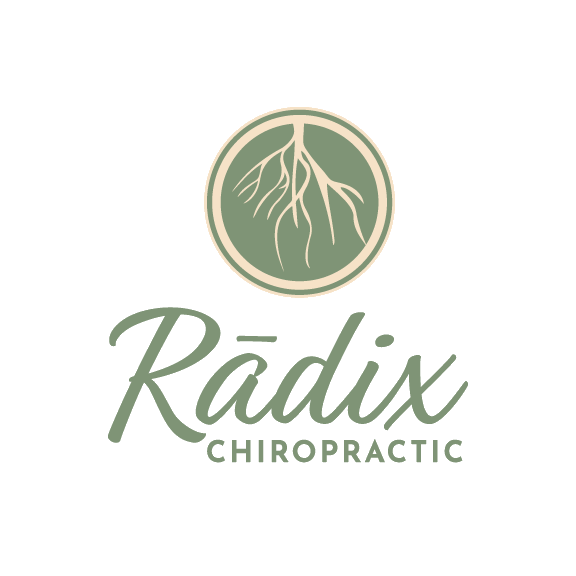Curious about prenatal chiropractic treatment? This guide walks you through your first visit, discussing safety, techniques, and the many benefits of chiropractic support during pregnancy. With specialized approaches for expecting mothers, prenatal chiropractic care can relieve common pregnancy discomforts, establish pelvic balance, and support a healthier pregnancy journey.
Key Takeaways
- Preparing for your prenatal chiropractic visit involves gathering essential documents, wearing comfortable clothing, and arriving early to ensure a productive consultation.
- Personalized care plans and gentle chiropractic adjustments, including the Webster Technique, can treat pregnant women’s specific needs, encouraging optimal fetal positioning.
- Regular prenatal chiropractic visits help manage pregnancy-related discomforts, maintain pelvic alignment, and aid postnatal recovery.
Understanding Prenatal Chiropractic Care
Prenatal chiropractic care is designed to address the unique needs of a pregnant woman’s body, including relieving discomfort, ensuring proper pelvic alignment, and supporting overall health. With specialized training, prenatal chiropractors safely treat pregnant women by using gentle adjustments to accommodate their changing bodies. By understanding prenatal chiropractic care, expecting mothers can make informed healthcare decisions for a healthier pregnancy.
Preparing for Your First Visit

An initial visit to a prenatal chiropractor is the first step in establishing a chiropractic care routine that supports pregnancy wellness. Start by gathering your medical history, expected delivery date, specific symptoms, and insurance information. Prenatal chiropractic visits are essential in treating pregnant women’s unique needs, which can include managing mid-back pain, pelvic pain, and sacral and pelvic misalignment.
Wear loose-fitting clothing like leggings or sweatpants to allow easy movement during evaluations and adjustments. Arriving early gives you a moment to unwind and review any questions or specific concerns with your chiropractor, which sets a solid foundation for ongoing care.
Initial Consultation and Health Assessment
Prenatal chiropractic care begins with a thorough health assessment that personalizes your care. During this initial consultation, your chiropractor will review your pregnancy history and neck pain, pelvic floor function, symptoms, and overall health. This is followed by a gentle physical exam that focuses on the spine and pelvis.
In some cases, non-X-ray diagnostic methods are preferred, like neurologic scans or electromyography, which prioritize safety while providing insights into spinal alignment and sacroiliac dysfunction. This specific chiropractic analysis ensures the chiropractor can develop an effective, tailored treatment plan for you.
Safety and Precautions
Prenatal chiropractic care is considered safe for pregnant patients. Chiropractors specializing in pregnancy use chiropractic tables with abdominal cutouts or adjustable sections and techniques like the Webster Technique, which prioritizes the safety and comfort of the pregnant woman’s body. Pregnant women should always consult with their healthcare provider before beginning chiropractic care, especially if they experience symptoms such as vaginal bleeding or have underlying health concerns.
Developing Your Personalized Care Plan
A customized care plan is essential for effective prenatal chiropractic treatment. Based on your symptoms, goals, and health history, your chiropractor will create a plan to support your health as your pregnancy progresses.
This plan may include gentle spinal adjustments, physical therapy, and prenatal massage, which are all effective for addressing common pregnancy-related pain, such as joint discomfort and round ligament pain. Exercises targeting pregnancy-related discomforts may also be recommended to help expecting mothers stay active and comfortable throughout each trimester. This multi-faceted approach ensures comprehensive care that adapts to each stage of pregnancy.
Gentle Chiropractic Adjustments
Prenatal chiropractic care for expecting mothers emphasizes gentle chiropractic adjustments to manage pregnancy-related pain. Due to increased ligament laxity from the hormone relaxin, chiropractors use lighter forces and equipment like the Drop Table Method, which accommodates a pregnant woman’s pelvis for safe positioning. By maintaining spinal alignment, these adjustments help relieve joint pain, muscle tension, and weight gain-related discomfort.
Tables with abdominal cutouts are commonly used to avoid pressure on the abdomen, ensuring adjustments are safe and comfortable. This gentle approach helps manage lower back pain, hip discomfort, and other issues commonly experienced in pregnancy, contributing to an overall more comfortable pregnancy.
Special Techniques for Pregnancy

Prenatal chiropractic care includes techniques designed for treating pregnant women, such as the Webster Technique, which helps achieve optimal fetal positioning. This method reduces pelvic tension, giving the baby room to settle into a head-down position, which is ideal for birth. The Webster Technique is especially helpful for breech babies, with an 82% success rate, and can be safely started in the third trimester.
With a focus on pelvic alignment, chiropractors may also use complementary therapies to support pregnancy care, addressing misalignments that contribute to labor pain and sacroiliac dysfunction. These techniques enhance pregnancy wellness by supporting a balanced pelvis, making labor smoother, and reducing discomfort.
Pelvic Alignment and Pain Relief
Maintaining pelvic alignment is essential for a comfortable pregnancy and delivery. A balanced pelvis supports the baby’s positioning for birth, potentially leading to a shorter labor. Chiropractic adjustments are effective for managing common pregnancy-related discomforts, like pelvic pain, hip pain, and sciatica, which can arise from rapidly shifting posture as pregnancy progresses.
Prenatal chiropractic adjustments alleviate these discomforts by realigning the spine and pelvis, enhancing nervous system flow, and reducing pain. By managing misalignments that cause spinal nerve stress, regular chiropractic care supports both maternal and fetal health, ensuring a more comfortable and healthier pregnancy.
Addressing Common Pregnancy Complaints
Prenatal chiropractic care effectively manages common pregnancy complaints, such as lower back pain, sciatica, and joint discomfort. Additionally, chiropractors can help reduce pregnancy-related pain like mid-back pain and the effects of weight gain on the spine, ensuring the entire body is aligned. For some women, prenatal chiropractic adjustments also alleviate other issues, like morning sickness and fatigue, contributing to a more comfortable pregnancy experience.
Complementary Therapies
Many expecting mothers benefit from complementary therapies integrated with prenatal chiropractic care. Prenatal massage, therapeutic exercises, and hydrotherapy work alongside chiropractic adjustments to provide a complete prenatal wellness routine. These additional therapies reduce muscle tension, manage pain, and support health maintenance as pregnancy progresses.
Some chiropractic practices also offer educational workshops on childbirth preparation, pain management techniques, and sacroiliac function, providing expecting mothers with valuable resources. This well-rounded approach ensures mental and physical well-being, amplifying the benefits of chiropractic care for a strong pelvic floor and optimal pelvic balance.
Collaborating with Healthcare Professionals
Prenatal chiropractors often collaborate with healthcare professionals, including obstetricians and doulas, to provide comprehensive care to expecting mothers. This holistic approach addresses all aspects of prenatal care, including reproductive system health, physical therapy, and pain relief, promoting a healthier pregnancy and supporting a smoother delivery.
Frequency of Visits During Pregnancy

Chiropractic care frequency is customized based on individual needs. Most pregnant patients benefit from weekly or biweekly chiropractic adjustments during the first trimester to maintain spinal alignment and manage initial discomforts. As the pregnancy progresses into the second and third trimesters, adjustments can be made based on specific needs.
Continued care is valuable in preparing the body for labor by keeping the pelvis balanced and the nervous system relaxed. Prenatal chiropractic care can begin at any stage, providing adaptable, personalized support to promote health and well-being throughout the pregnancy journey.
Postnatal Chiropractic Care
Chiropractic care continues into the postnatal period, supporting recovery from childbirth. Realigning the spine and pelvis after delivery helps alleviate lingering discomforts, such as neck pain, joint pain, or spinal alignment issues resulting from labor. This focus on postnatal chiropractic adjustments assists new mothers as they adjust to the physical demands of infant care and promotes long-term health.
Studies indicate that women who receive prenatal chiropractic adjustments may experience shorter labor times, and continued postnatal care supports physical strength, joint stability, and overall health. This holistic support allows new mothers to regain vitality and engage fully in motherhood.
Discover Our Expert Prenatal Chiropractic Services
As prenatal chiropractors in Colorado Springs, we at Radix Chiropractic offer dedicated care to help expecting mothers navigate pregnancy more comfortably and confidently. Our experienced team uses safe, gentle techniques tailored to support you and your baby’s health. Whether you’re facing specific pregnancy discomforts or simply want to stay aligned and balanced, we’re here to help you enjoy a healthier journey to motherhood. Visit us to learn more about how our prenatal chiropractic services can contribute to a more comfortable and healthier pregnancy experience.

FAQs
How early can I start chiropractic care during pregnancy?
You can start prenatal chiropractic care at any stage of pregnancy. Many women begin in the first trimester to address early discomforts, with care adapted to meet their needs as pregnancy progresses.
Will chiropractic adjustments help reduce labor time?
Research suggests that women who receive prenatal chiropractic adjustments may experience shorter and less intense labor. Spinal alignment and pelvic balance are believed to contribute to a smoother delivery.
How often should I visit a chiropractor after delivery?
Postnatal chiropractic care frequency varies; however, weekly or biweekly visits initially can support recovery. Postnatal chiropractic adjustments help with realigning the spine and managing neck pain and back pain associated with caring for a newborn.
Photography by Michelle Betz Photography


